Women can have many different kinds of lump in their breasts. In fact, young women tend to have many due to their high hormone levels. Fortunately, most of them are benign lesions, like cysts and fibroadenomas. So, how do you know which lumps can be worrisome?
What is breast cancer?
Breast cancer is one of the most frequent types of cancer. 1 out of 8 women will get breast cancer at some point. Even more, during the last years, the cases of breast cancer are increasing. Surprisingly, deaths due to breast cancer are slowly decreasing. This happens for several reasons. One of the reasons is we diagnose it earlier, thanks to screening programs. Also, we have better techniques for diagnosing it (sentinel lymph node) and treating it (targeted therapies).
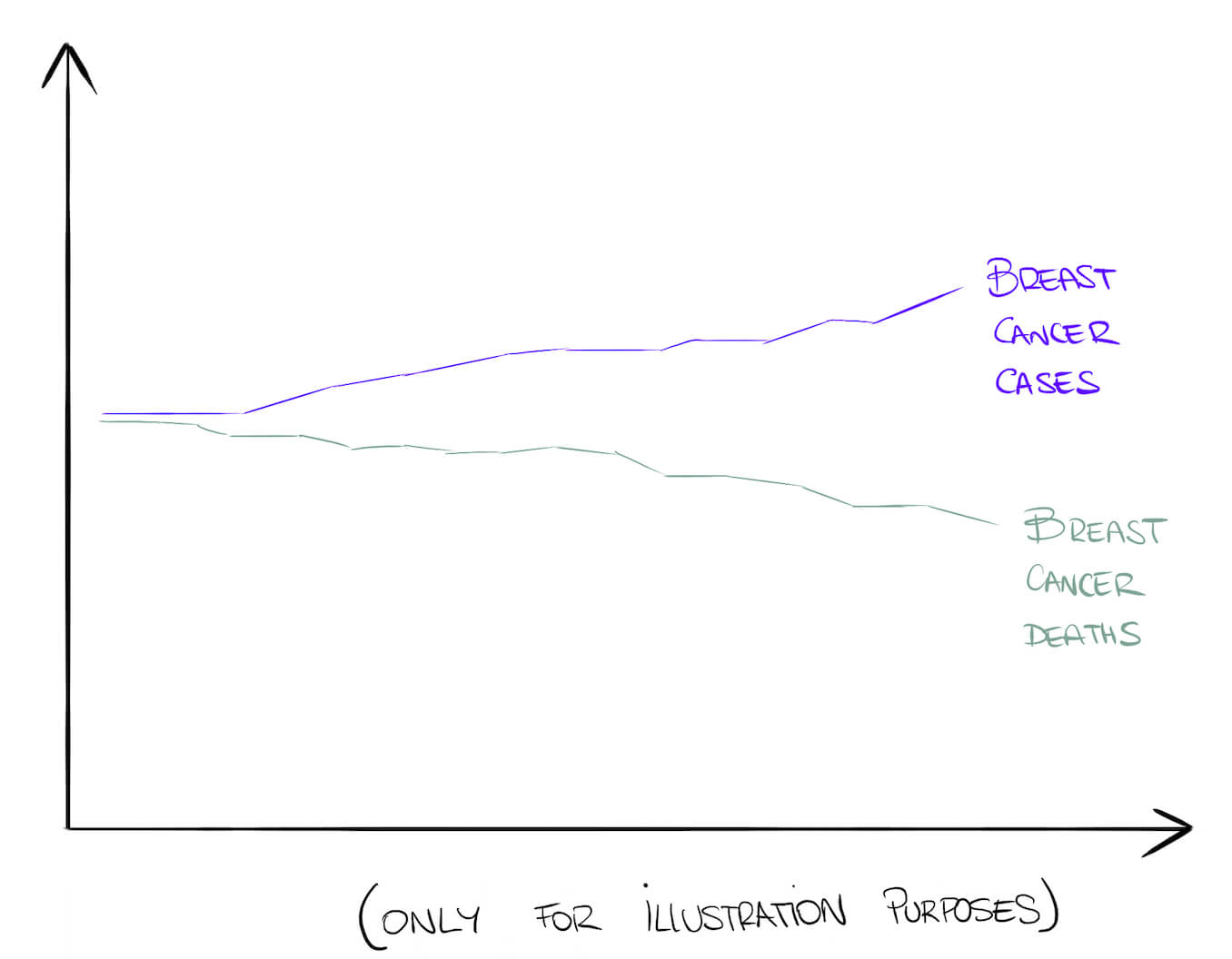
What are the risk factors for breast cancer?
Anyone can get breast cancer, but there are some things that will make it more likely that you will. The most obvious one is being a woman. Men can have breast cancer too, but it’s quite rare. Out of 10 cases, only 1 happens in men. There is also a genetic predisposition, so if there are other cases in your family, your risk might be higher. You may have heard of BRCA mutation. This mutation makes you more prone to breast cancer and other types of cancer, too. Patients who find out they have BRCA sometimes choose to remove both their breasts preventively. Angelina Jolie has this mutation and helped raise awareness about it.
Also, there are hormonal risk factors. For example if your first period was very soon (like before 12) or your menopause was late (over 55) then you may have a higher risk. That’s because you’ve spent a longer time under the effect of some hormones. That’s also why breast cancer is more frequent in women with no children or those who take hormone replacement therapy.
How do you diagnose breast cancer?
There are two main ways to detect it: screening tests or diagnostic tests.
· Screening tests
We use screening tests for large populations. For example, for women over 45. These women don’t have any symptoms but we run screening tests on them to try and catch some cases early on. For breast cancer, the screening test is mammography. Mammography is like an x-ray that detects masses in your breasts. Like all screening tests, they must be harmless, because millions of people will have them.
· Diagnostic tests
Diagnostic tests are used when women do have some symptoms. For example, they feel a lump in your breast so they go to the doctor. Another possible signs are changes in your nipple: it gets inverted, “sucked in”. Also if the skin in your breast starts dimpling or looks like the skin of an orange.
If you get any of these symptoms, you will need to get a mammography and ultrasound. If these tests find any suspicious masses, your doctor will biopsy them (take a sample) to make sure it is cancer.
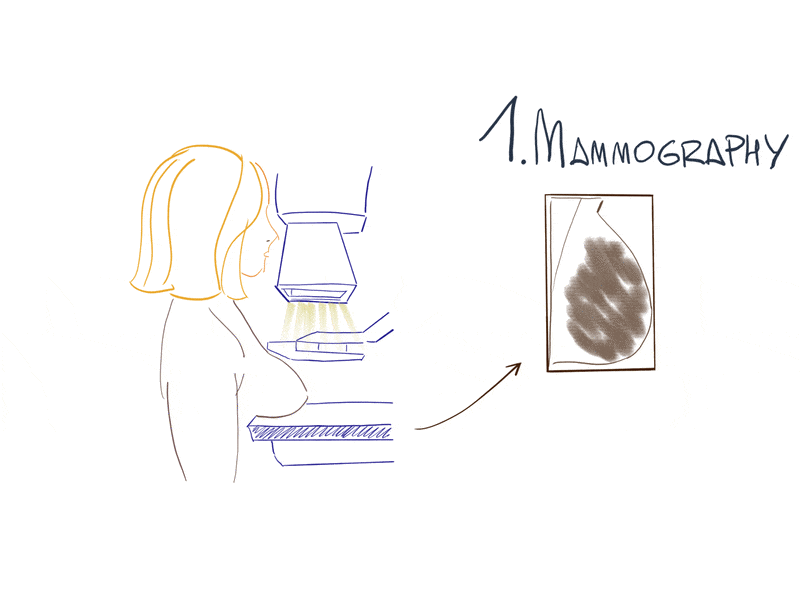
How do you know if the tumor has spread?
Once cancer is confirmed, it’s important to determine if it has spread. That process is called staging and it will determine the prognosis and treatment. We use 3 parameters for staging. The first one, we call it “T” from “tumor”. Essentially it’s about how large the tumor is and whether or not it infiltrates other structures. The second one is “N” from (lymph) “nodes”, it indicates if there are affected lymph nodes. The last one is “M” from “metastasis”. Each letter comes with a number so your staging could be T3 N2 M0.
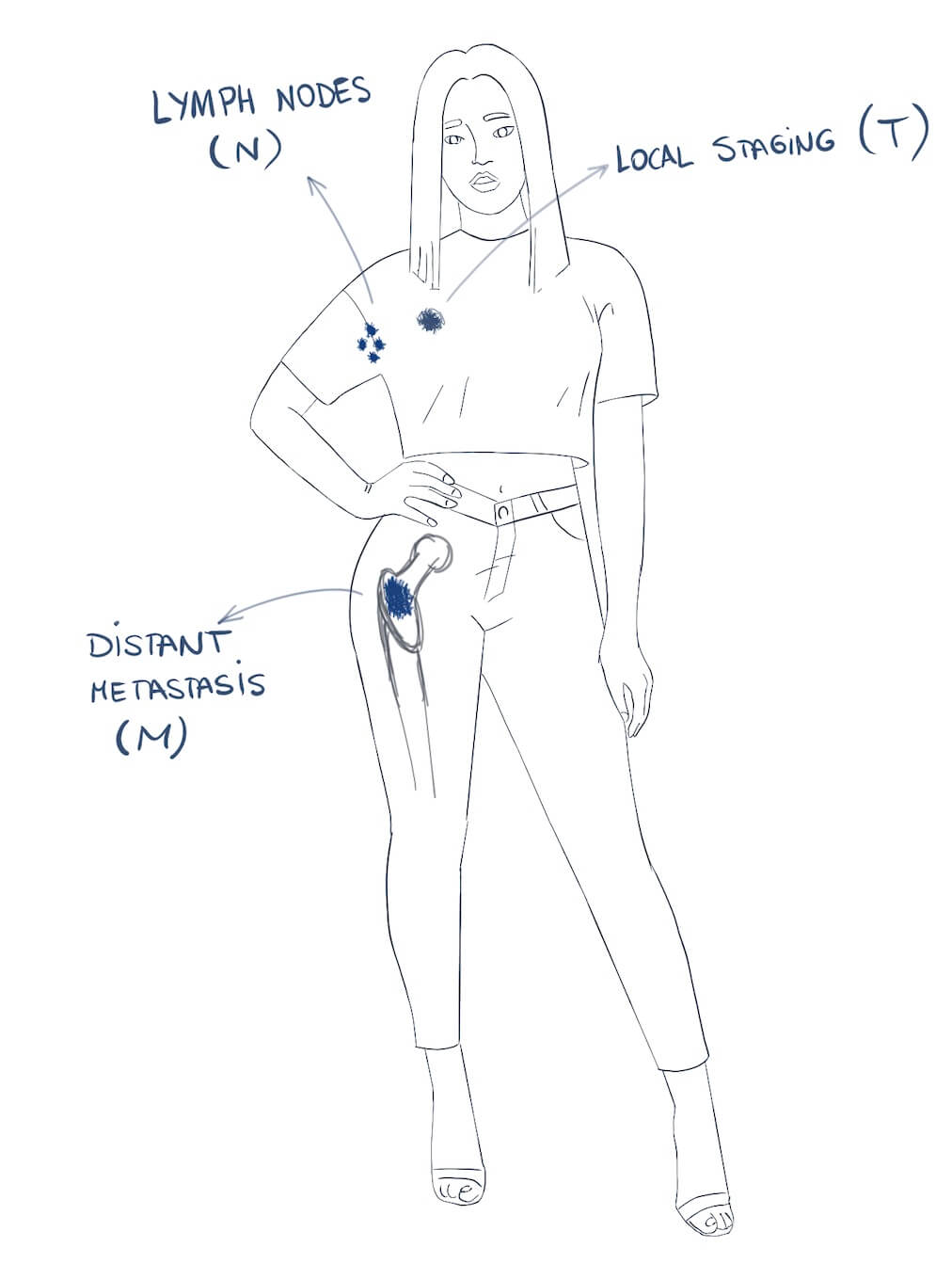
There are several tests for staging like a full body CT, gammagraphy, MRI or sentinel lymph node.
-
What is HER2 BREAST CANCER?
Another important factor is determining HER2 receptors. A tumor can be HER2(+) or HER2(-). HER2(+) are more aggressive tumors, but we now have specific therapies against them. Some years ago they had a bad prognosis, but that changed when these new therapies were born.
How do you treat breast cancer?
There are different options depending on the staging and the type.
Radiotherapy
We use radiotherapy after surgery when they remove just the tumor, not the whole breast. It’s helpful to prevent cancer from growing again right from where it was resected (from microscopic remaining cells).
Surgery
There are different techniques. As we said your surgeon may remove just the tumor, which is called lumpectomy. We use that for small tumors. If they remove your whole breast, that’s called mastectomy, which we use for larger tumors or for several ones. If there are lymph nodes affected, your surgeon will remove them too, which is called lymph node dissection.

Chemotherapy
There are several modalities of chemotherapy. We can use it after surgery, to prevent any remaining malignant cell from spreading to other organs (adjuvant chemotherapy). If we use it before surgery, that’s because the tumor is too large and we are trying to shrink it before surgery (neoadjuvancy). Finally, we use chemotherapy for patients with metastases, because it allows us to reach several organs with the same treatment.
Newer treatments
Targeted therapy
If we find the tumor has certain proteins, like in the case of HER2(+) tumors, we can use some specific therapies that will only attack cells with those proteins. This is great, because this weapon won’t attack other healthy cells, like regular chemotherapy does. They’ll only attack malignant cells. That’s also why these targeted therapies have fewer side effects. Targeted therapies work as a sniper, regular chemotherapy as a war tank. However, we use them together, that’s the way they are most effective.
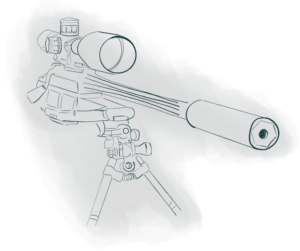
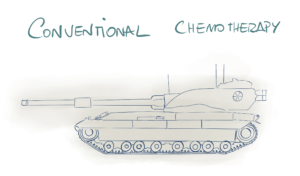
Hormone therapy
Because breast cancer is so dependant on hormones, we can use that to our advantage as well. Some hormones promote breast tumor growth, so if we can find some specific drugs to block those receptors, we can stop those tumors from growing. Some examples are Tamoxifen or Fulvestrant.
What’s its prognosis?
If we detect it on time, prognosis can be very good.
- If it only affects the breast, there is a 99% 5-year survival rate.
- On the other side, if there are distant mets, then there is a 27% survival rate.
- Finally, if we consider all cases together, there is a 90 % 5-year survival rate.
Leave a Reply